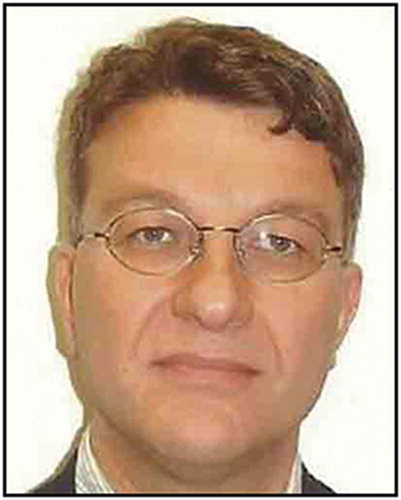I had the privilege to serve as a member of the National Academy of Sciences Panel on Exposure Science in the 21st Century: “A Vision and a Strategy.” One of the key conclusions listed in the panel’s report is that “Remote Sensing for Exposure Assessment has emerged as a key innovation in exposure science.” Earlier applications of satellite-based remote sensing included characterization of air pollution across space and time, especially in areas with sparse monitoring networks or those not accessible to humans. These applications increased over time due to the increasing number of satellite platforms collecting data with better accuracy, spatiotemporal coverage, and accessibility. The concomitant increase of computing power made it easier to access, manage, and analyze remote-sensing data. However, the different satellite products were qualitative with limited spatial or temporal coverage, which limited their use in the field of human exposure assessment and especially health effects. To overcome this obstacle, recent studies have introduced statistical approaches that aim at calibrating remote-sensing data using ground monitoring data or outputs of chemical transport models. In addition to calibration, new statistical models have made it possible to predict exposures when remote-sensing data are not available. Toward this end, these methods employ land use, meteorological, and air pollution monitoring data, among others. Together, these advancements have created a new dynamic where new applications are continuously emerging.
Despite these advancements, there is more work to be done. Previous studies have focused on a limited number of pollutants (e.g., particle mass, nitrogen dioxide, and ozone). However, data exist for other gaseous pollutants (e.g., formaldehyde, methane) or particle properties (e.g., size, composition) for which statistical models can be developed. Unfortunately, not all satellite-based remote-sensing data are publically available, especially those collected by organizations outside of the United States. Thus, it is important that the scientific community acquires more access to additional data sources. Furthermore, based on my experience with the NASA MAIC team, it is critical that the scientific community works closely with scientists who develop the product algorithms. This will make it possible to tailor the data to the different research needs, as well as to validate them and improve their quality. It is anticipated that more methodologies will be developed for remote-sensing-based exposure assessments. Thus, it will be important to compare these methods and understand their strengths and weaknesses. Another exciting and emerging field is that of microsensors, which can be deployed in large numbers to collect data on different gaseous pollutants and environmental parameters. It will be advantageous to introduce statistical models that integrate data from different satellites and ground-based low-cost sensors. Finally, many future air pollution epidemiology studies will be based on remote-sensing data rather than ground monitoring data collected using U.S. Environmental Protection Agency (EPA)-approved methods. Policymakers will therefore face a dilemma, which is whether or not to consider health studies relying upon nontraditional exposure assessment measurements.
JA&WMA invited researchers who have used remote-sensing data for exposure and assessment and health effects studies to submit manuscripts for publication in this special issue. Specifically, this issue presents a series of research papers spanning a large spectrum of applications, including assessment of PM2.5 and ozone exposures and their spatial and temporal patterns; prediction of PM2.5 emission inventories; characterization of desert dust episodes and their origin; use of visibility data to calibrate satellite-based aerosol optical depth (AOD) measurements; evaluation of air pollutant temporal trends and the efficacy of air pollution regulations; use of earth science data and models in air quality management; and assessment of the effects of surface temperature on cardiac health. Although most of the studies focus on the United States, several papers present results from other countries, including Afghanistan, Greece, Iraq, and Israel.
Over the past two decades, many investigators around the world have contributed to the advancement of the field and continue to do so. Obviously, this special issue is not representative of the research conducted by the scientific community at large. However, we made an effort to invite most of the researchers we know. Thus, this issue includes the work of those who responded positively to our invitation. Despite its limited scope, this special issue encompasses a series of exciting scientific papers presenting cutting-edge applications, as already highlighted. Finally, this issue reflects the interest of JA&WMA to publish papers in the emerging field of applications of remote-sensing data to assess environmental exposures and their health and ecologic impacts.
This special issue includes 10 scientific papers:
Marie C. Russell et al. evaluated whether the closing of three coal-fired power plants within the southwestern Pennsylvania region resulted in a significant decrease in PM2.5, using EPA ground stations and AOD.
A. Alexandra Chudnovsky et al. tested the utility of different sources of satellite data to assess air pollution concentrations in Iraq, including SeaWiFS and MODIS Deep Blue AOD products.
Meytar Sorek-Hamer et al. explored the statistical relationships between AERONET and satellite-based and AOD and the PM2.5/PM10 ratio and specific PM size fractions.
Qian Di et al. developed a model that uses satellite data, neural networks, and outputs from chemical transport model to assess ozone exposures across the continental United States.
Chia-Hsi Tang et al. developed a method that uses satellite-based AOD data to estimate PM2.5 emission inventories in the Northeast United States.
Chia-Hsi Tang et al. used predictions from the emissions model to examine the spatial and temporal patterns of emissions in the northeast United States and compare them to land use variables.
Shahir Masri et al. examined relationships between visibility, relative humidity, and PM2.5 measurements in Kuwait.
Shahir Masri et al. developed a novel calibration approach using satellite AOD and visibility observations to estimate exposures of soldiers to PM2.5 in southwest Asia and Afghanistan.
Antonella Zanobetti et al. studied the association between fine-scale spatial and temporal variation in temperature and arrhythmia episodes in the VA Normative Aging Study.
Vasileios N. Matthaios et al. characterized dust storm events and local air pollution episodes in Greece using ground PM10 monitoring, satellite AOD, and model simulations.

